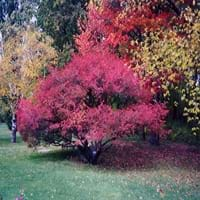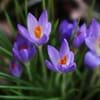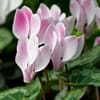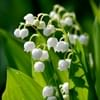Life Span
Perennial
Perennial
Type
Bulb, Flowering Plants
Shrub
Origin
Aegean Islands, Central Asia, Middle East, North Africa, Southern Europe, Western China
Europe, Western Asia
Types
Crocus abantensis, Crocus adanensis, Crocus biflorus, Crocus chrysanthus, Crocus korolkowii
Euonymus fortunei, Euonymus alatus, Euonymus europaeus
Number of Varieties
Not Available
Habitat
Scrubs, Woods
Dappled Shade, Shady Edge, Sunny Edge, Woodland Garden
USDA Hardiness Zone
3-8
4-7
Sunset Zone
1a, 1b, 2a, 2b, 3a, 3b, 4, 5, 6, 7, 8, 9, 10, 11, 12, 13, 14, 15, 16, 17, 18, 19, 20, 21, 22, 23, 24
1a, 1b, 2a, 2b, 3a, 3b, 4, 5, 6, 7, 8, 9, 14, 15, 16
Habit
Clump-Forming
Upright/Erect
Minimum Height
Not Available
Flower Color
Blue, Orange, Pink, Purple, White, Yellow
Yellow green
Flower Color Modifier
Not Available
Not Available
Fruit Color
Not Available
Pink, Purple, Red
Leaf Color in Spring
Green
Green
Leaf Color in Summer
Not Available
Green
Leaf Color in Fall
Green
Red
Leaf Color in Winter
Green
Not Available
Leaf Shape
Grass like
Lanceolate to elliptical
Plant Season
Spring, Winter
Fall
Sunlight
Full Sun, Part sun
Full Sun, Partial Sun, Partial shade
Type of Soil
Loamy
Clay, Loam, Sand
The pH of Soil
Neutral, Slightly Acidic
Acidic, Neutral, Alkaline
Soil Drainage
Well drained
Well drained
Bloom Time
Spring, Winter
Late Spring
Tolerances
Drought
Drought
Where to Plant?
Container, Ground, Pot
Ground, Pot
How to Plant?
From bulbs, Grafting, Seedlings
Cuttings, Seedlings
Plant Maintenance
Medium
Medium
Watering Requirements
Form a Soil ring to water efficiently, Water Deeply, Water twice a day in the initial period, Water when soil is dry
Average Water Needs, Do Not over Water
In Summer
Lots of watering
Lots of watering
In Spring
Moderate
Moderate
In Winter
Average Water
Average Water
Soil pH
Neutral, Slightly Acidic
Acidic, Neutral, Alkaline
Soil Type
Loamy
Clay, Loam, Sand
Soil Drainage Capacity
Well drained
Well drained
Sun Exposure
Full Sun, Part sun
Full Sun, Partial Sun, Partial shade
Pruning
No pruning needed in the early stages, Prune to stimulate growth, Remove dead or diseased plant parts, Requires little pruning
Remove damaged leaves, Remove dead branches, Remove dead leaves
Fertilizers
All-Purpose Liquid Fertilizer
organic fertlizers
Pests and Diseases
Aphids, Botrytis Blight, Mushroom root rot, Narcissus Basal Rot, Narcissus Bulb Fly, Slugs, Snails, Tulip Fire, Tulip Viruses
Powdery mildew, Vine weevils
Plant Tolerance
Drought
Drought
Flowers
Yes
Insignificant
Flower Petal Number
Single
Single
Foliage Texture
Fine
Medium
Foliage Sheen
Glossy
Glossy
Attracts
Not Available
Birds
Allergy
Not Available
Mild Allergen
Aesthetic Uses
Not Available
Showy Purposes
Beauty Benefits
Not Available
Not Available
Environmental Uses
Air purification
Air purification
Medicinal Uses
Arthritis, Gout
Alterative, Laxative, Purgative, Tonic
Part of Plant Used
Whole plant
Bark, Seeds, Wood
Other Uses
Not Available
Edible yellow dye is obtained, Used as essential oil, Yields a volatile oil that is used in soap making
Used As Indoor Plant
No
Yes
Used As Outdoor Plant
Yes
Yes
Garden Design
Not Available
Hedges, Screening, Wind Break
Botanical Name
Crocus Longiflorus
EUONYMUS europaeus 'Aldenhamensis'
Common Name
Crocus
Spindle Tree, Common Spindle, European Spindle
In Hindi
Crocus
Spindle Tree
In German
Krokus
Spindelbaum
In French
Crocus
Spindle Arbre
In Spanish
Azafrán
Árbol del husillo
In Greek
κρόκος
ατράκτου Δέντρο
In Portuguese
Açafrão
Árvore spindle
In Polish
Krokus
Wrzeciono Drzewo
In Latin
Erocum
Ligno colos
Phylum
Magnoliophyta
Magnoliophyta
Class
Liliopsida
Magnoliopsida
Order
Asparagales
Celastrales
Family
Iridaceae
Celastraceae
Clade
Angiosperms, Monocots
Angiosperms, Eudicots, Rosids
Tribe
Not Available
Euonymeae
Subfamily
Crocoideae
Celastroideae
Number of Species
Not Available
Season and Care of Crocus and Spindle Tree
Season and care of Crocus and Spindle Tree is important to know. While considering everything about Crocus and Spindle Tree Care, growing season is an essential factor. Crocus season is Spring and Winter and Spindle Tree season is Spring and Winter. The type of soil for Crocus is Loamy and for Spindle Tree is Clay, Loam, Sand while the PH of soil for Crocus is Neutral, Slightly Acidic and for Spindle Tree is Acidic, Neutral, Alkaline.
Crocus and Spindle Tree Physical Information
Crocus and Spindle Tree physical information is very important for comparison. Crocus height is Not Available and width 5.10 cm whereas Spindle Tree height is 370.00 cm and width 900.00 cm. The color specification of Crocus and Spindle Tree are as follows:
Crocus flower color: Blue, Orange, Pink, Purple, White and Yellow
Crocus leaf color: Green
Spindle Tree flower color: Yellow green
- Spindle Tree leaf color: Green
Care of Crocus and Spindle Tree
Care of Crocus and Spindle Tree include pruning, fertilizers, watering etc. Crocus pruning is done No pruning needed in the early stages, Prune to stimulate growth, Remove dead or diseased plant parts and Requires little pruning and Spindle Tree pruning is done Remove damaged leaves, Remove dead branches and Remove dead leaves. In summer Crocus needs Lots of watering and in winter, it needs Average Water. Whereas, in summer Spindle Tree needs Lots of watering and in winter, it needs Average Water.





